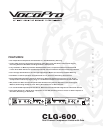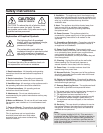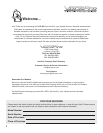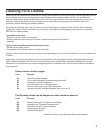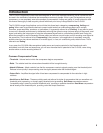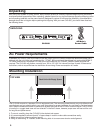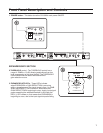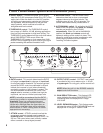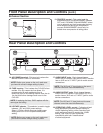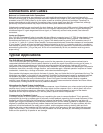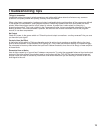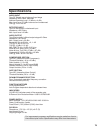
10
The CLG-600 as A Protection Device
The CLG-600 provides quick and accurate gain control for the prevention of sound system overload due to
unexpected peaks/transients. Sound system distortion is usually the result of amplifiers running out of power, in
which case nice round waveforms turn into harsh sounding squared-off waveforms. Looking at it from the
perspective of the speaker diaphragm, this means that, whereas in normal operation the diaphragm is required to
accelerate, slow down, smoothly change direction, and accelerate again, distorted operation requires an instant
acceleration, instant stop, a change of direction, and instant acceleration again.
Since speaker diaphragms are subject to the laws of physics, they won't take this kind of punishment for long. The
diaphragm may shatter, or its voice coil may overheat. In addition to the damaged caused by sustained overload,
the speaker may also be damaged by occasional, one-shot high level overload, for example, the sound of a
microphone falling face-first onto a hardwood floor. Even if this type of transient doesn't destroy a speaker
outright, it may damage the speaker surround in such a way as to cause mechanical abrasion and future failure.
In this situation, Limiting would be used as a protective measure.
Alternatives for Sound System Installations
To install the CLG-600 in a system using a passive crossover, insert it between your mixers output and the power
amplifier input. It may be inserted between the mixer output and the crossover input, in which case it will act on
the entire audio frequency spectrum. Alternately, if the limiter is inserted between an output of the electric
crossover and the input of a power amp, it will only affect a specific band of frequencies.
Compression for Feedback Control
A common practice in sound system setting-up is equalizing the room to remove feedback. This is generally
accomplished by turning up system gain to purposely induce feedback, searching for the center frequency of the
feedback, and then equalizing at that frequency to remove the feedback. Once this frequency has been cut,
system gain is again increased to induce another feedback point, and the whole procedure is repeated until the
engineer is satisfied that the significant problem frequencies have been corrected. The major problem with this
approach is that the feedback can easily get out control, and the engineer ends up dashing back and forth
between the mixer volume controls and the equalizer controls, while everyone in the room plugs their ears and
prays it will end soon. The CLG-600 can turn this procedure into a fast, painless job, eliminating loud feedback
levels and the possibility of speaker or ear damage.
Connections and Cables
Typical Applications
Balanced vs. Unbalanced Audio Connections
Balanced signal connections are preferred in pro audio applications because of their improved immunity to
induced hum and noise. A properly shielded and wired balanced input stage on any audio product will reject most
unwanted noise (RFI, EMI) picked up by the cable, as well as minimize ground loop problems. Therefore it is
always advantageous to use balanced connections when running signal more than ten or fifteen feet, although
particularly noisy environments may require that even short patch cables be balanced.
Unbalanced connections are used mostly for short distance, high level signals (0dBu nominal). Most external EMI
noise pick-up will be masked under the noise floor of the signal, assuming there is little or no gain following the
unbalanced signal. If a gain stage does follow a signal, or if externally sourced noise persists, use balanced
connectors.
Inputs and Outputs
Your CLG-600 Compressor/Limiter is provided with two different connector types. 1/4" TRS (tip-ring-sleeve) phone
jacks, and three pin XLR connectors will allow interfacing to most professional audio products. TRS balanced
connections use the tip as (+) and the ring as (-) signal, with sleeve used for ground. XLR connectors use pin 2
(+) and pin 3 (-) with pin 1 ground. When possible, we recommend balanced connections between all components
in your system. If inputs are used unbalanced, the signal should be on the (+) connection and the (-) connection
must be tied to ground, or signal loss will result. While a mono phone plug used as an unbalanced connection will
automatically ground the (-) ring of the jack, XLR's will not automatically do this, so attention must be given to
proper wiring.



